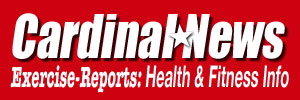Being shackled to a computer for eight hours at work, driving cars, and staring at smartphones and tablets lead to poor posture. There is hope though. Employers have taken note of the health hazards posed by poor posture in the workplace and follow a variety of guidelines to improve their employee’s posture and comfort. There are a multitude of ways for individuals to improve their posture at home too. Get to know the signs you have bad posture and decide how yours stacks up.
Rounded Shoulders
High rounded shoulders and tight pec muscles are signs you have bad posture. This is common among office workers. Excessive time spent at a desk leads to a tightening and shortening of the muscles in the front shoulders and chest, and a weakening and lengthening of the back and neck muscles.
Carrying the Head Forward
A forward head carriage comes from bad postures that cause the neck to slant forward. It typically arises, again, from staring at computer monitors and handheld devices. This goes by another name people are more familiar with, tech neck. The forward slant of the neck puts stress on the cervical spine and create muscle imbalance as the body compensates.
Hunched Back
Thoracic kyphosis, also known as a hunch back, is a common symptom of poor posture. It is most common in adolescents and young adults. It usually accompanies a forward head carriage and rounded shoulders. Another cause of hunch back is Scheuermann’s disease which is an abnormal growth on the thoracic spine.
Constant Headaches
People that struggle with recurring headaches might not know it’s because they have poor posture. A forward head carriage puts the vertebrae and discs of the neck under intense strain as they struggle to support the weight of the head. Neck muscles are overworked in this constant position and a lot of tension is created where they attach to the back of the head. That tension creates the headaches.
Tilted Pelvis
Constantly sitting be it at a desk or on the couch will lead to tension in the hip flexors. They run from the lower back to the front of the hip. Tight ip flexors result in the pelvis rotating forward. This leads to an increased curvature of the lower and upper back. Leading to pain.

★ | NEWS NOW | LOCAL NEWS
WEATHER NOW | US/World Chicago

